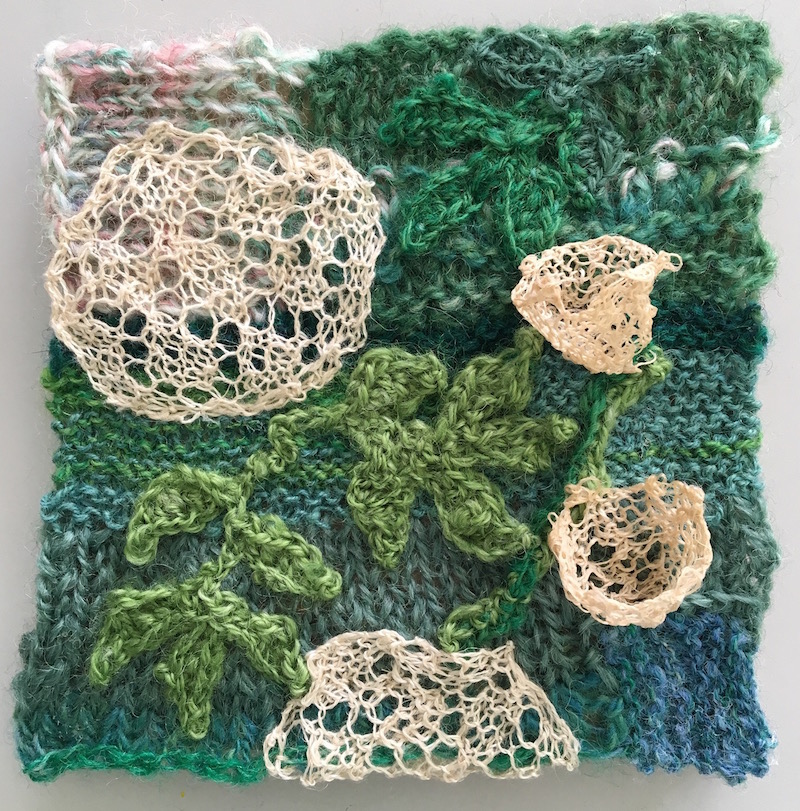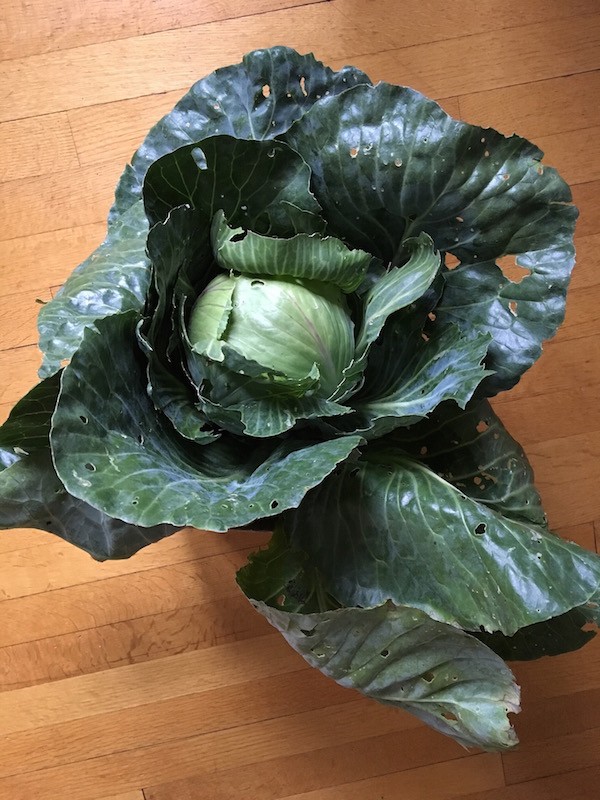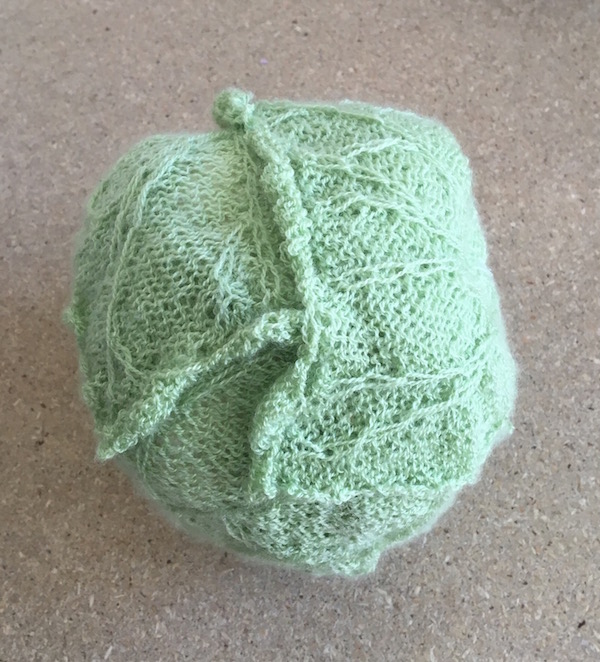
Capturing the Texture of Fall
For some people, an autumn walk is a chance to feast on the golden colors of trees blazing in the sun. For me, it is an opportunity to observe the ethereal clouds of fall asters, the delicate textures of flowers gone past, and the bulging solid masses of late harvest vegetables. I try to capture these images on my phone’s camera so I can return to them in my studio. There, I dig through pattern books, looking for knitting stitches that will convey the feeling of the textures I found on my walks.
The spent blossoms of the flat-topped Queen Anne’s Lace (Daucus carota) curl up into brown scepters as they go to seed in the fall. It’s easy to see how this wildflower earned the alternative name of Bird’s Nest. The intricacy of this common roadside plant extends even to its leaves. Their delicate cut lobes look like little ferns.
Charting lace

I planned to make a 6 x 6 inch panel for a fundraiser for the North Country Studio Workshops. I have attended this terrific 5-day biennial craft studio program at Bennington College a couple of times. A small panel like this would be an ideal way to experiment with lace shapes for Queen Anne’s Lace. There are many styles of lace knitting; every culture has its own variation. To make the lace flower, I adapted a pattern from the Russian Orenburg tradition, and charted a circle of stitches on graph paper. Using fine silk-wool yarn, I knit a couple of lace disks.
I shaped a simplified version of the lace into a cone and stiffened it with textile medium. It’s not exactly the right shape, but it’s a good test. If I make a larger work incorporating this plant, I now know it needs to narrow again at the top. I placed the creamy lace on a riotous bed of green knitting. The mixture of textures and leaves evokes the exuberance of the field, though captured in more summery hues.

© 2018 Eve Jacobs-Carnahan, Queen Anne’s Lace, 6 x 6 inches, knitted and crocheted yarns in wool and wool/silk
Vegetables in the garden
Some friends recently brought me a cabbage from their garden. They apologized for the insect holes in the outer leaves. But I thought it was perfect. It was just like the cabbage sculpture I had started knitting last winter. My knitted cabbage has lace holes.

Here’s the real cabbage with its huge curled outer leaves, protecting the pale edible center. It became cabbage, bean, sausage soup in my kitchen.

Here is the center of the knitted cabbage. I used a slip-stitch technique to show the ridges on the leaves. I took advantage of the natural tendency for knitting to curl and make ruffles at the edges, just like the cabbage does.

I shaped seven leaves from wire and mulberry paper. They are flared, so they will curve outward from the core when attached. This photo shows the knitted covers on three of them. I have two more to complete before I attach them to the center.